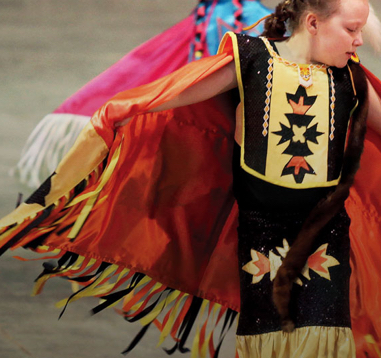The Community Development Plan “At a Glace”
The Community Development Plan consists of five sections and fifteen appendices that serve as functional area work plans. An overview of each section is given below.
Section 1 – Introduction and Overview:
The Community Development Plan purpose and overview of the planning process is provided in Section 1. Tribal history including pre-Reservation, early-Reservation, and post-Restoration is given. The Tribe’s visions and values are then outlined based on information set forth in the Tribal Constitution and previously adopted Ordinances and Strategic Plans.
Section 2 – Community Profile:
This section of the Community Development plans provides an overview of the geographic area, boundaries of the historic Reservation, and demographic and economic conditions of the area.
The Grand Ronde community is not an incorporated City with a defined boundary, but instead can be characterized geographically in several different ways i.e. zip code, census designated place, historic Reservation boundary, etc. This variation in how the community is defined lead to The Four Communities approach outlined in Section 3.
Section 3 – The Four Communities:
The Four Communities approach is unique to this planning effort and recognizes that the Tribe serves four unique communities with different visions.
- Grand Ronde is The Seat of Government where Tribal Council exercise its constitutional authorities;
- Grand Ronde is A Place to Live where Tribal members and their families can live in their own community;
- Grand Ronde is A Place to Connect where Grand Ronde serves as the social, cultural, and spiritual home of the Grand Ronde Tribe;
- Grand Ronde is A Regional Economic Engine and is home to the region’s most impactful economic engine, the Tribe itself.
The Four Communities approach allows for the evaluation of initiatives and strategies without limiting the analysis to a single geographic boundary or community. Instead the plan evaluates multiple geographic boundaries, populations, and development questions using different community lenses.
Section 4 – Situational Assessment 15 Topic Areas:
Using a myriad of input devices including listening sessions, stakeholder interviews, plan reviews, surveys, and Tribal Council work session, a situational assessment was created for fifteen (15) topic areas covering all aspects of Tribal Government and membership services. Key challenges and opportunities for each topic areas were identified. The list of the fifteen (15) topic areas can be seen below under Appendices.
Section 5 – Community Development Initiatives:
Once the Situational Assessment of the 15 Topic Areas was complete, synergy between topic areas and departments became evident. In order to further encourage and support collaboration, initiatives were developed for each of the four communities. In essence, the initiatives are another collaborative way of looking at and understanding the goals. Many of the initiatives directly address two or more functional area’s stated goals.
As an example, the “5.2b Age-in Place” Initiative is supported by the following functional area goals:
- Housing (Goal A2.2)
- Health and Community Wellness (Goal E1.1, E2.2)
- Social Services (Goal F2.3)
Whether focus is placed on completing initiatives or goals, the success of the Community Development Plan lies with the collaboration across functional areas and departments

